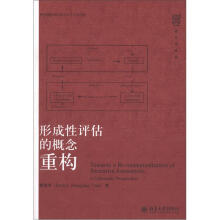Introduction
Chapter 1 Assessment and Learning
1.1 The relationships between assessment and learning
1.2 Mastery Learning aligned with Psychometrics
1.2.1 The objectives model of curriculum
1.2.2 Psychometrics
1.3 Learning as a process: Assessment as research
1.3.1 The progressive philosophy of learning
1.3.2 The reconstructionism philosophy of learning
1.3.3 Curriculum design in learning as a process
1.3.4 Teacher as researcher: What about assessment?
1.4 Towards integrating assessment with instruction
1.4.1 The invention of the formative concept
1.4.2 Towards integrating assessment and instruction
1.4.3 Behaviorist connections of the formative concept
1.5 Integrating assessment with learning
1.5.1 The constructivist claim
1.5.2 AfL:Its ups and downs
1.5.3 Advocating AfL
1.6 Chapter summary and discussion
Chapter 2 Re-conceptualization of the formative role of assessment
2.1 Redefining the relationship between FA and SA
2.2 Redefining FA and AfL:Two different visions
2.3 The formative role of assessment: A double-edged sword
2.4 Summary of the chapter
Chapter 3 Assessment as a cybernetic system
3.1 Revisiting the meta-disciplinary character of cybernetics
3.2 Control and feedback
3.3 The features of assessment as a cybernetic'system
3.3.1 Assessment as an open probabilistic system
3.3.2 Assessment as a complex system
3.3.3 Assessment as a self-regulatory system
3.3.4 The implications of assessment being a cybernetic system
3.4 Linking Chinese philosophy to cybernetics
3.4.1 The Yin-Yang Doctrine
3.4.2 The Doctrine of the Mean
3.4.3 Discussion
3.5 Towards a cybernetic model of assessment
3.5.1 Theoretical assumptions
3.5.2 The model
3.6 Chapter summary
Chapter 4 Accommodating the cybernetic model in China-s assessment in education: A historical perspective
4.1 The rationale and research methodology
4.2 A cybernetic understanding of China-s assessment system
4.2.1 Major themes in China's ancient assessment history
4.2.2 China's assessment system since 1949
4.2.3 The EFL education
4.3 Discussion
4.3.1 Assessment:A control system
4.3.2 Assessment:A non-deterministic system
4.4 Chapter summary
Chapter 5 Accommodating the model in classroom settings
5.1 Cross-case analysis
5.1.1 A general description of sources of data
5.1.2 Unit of analysis
5.1.3 Issue-based analyses
5.2 Fitting the model in China's EFL tertiary education
5.3 Chapter summary
Chapter 6 Winding up the research
References
Appendices

 缺书网
缺书网 扫码进群
扫码进群






